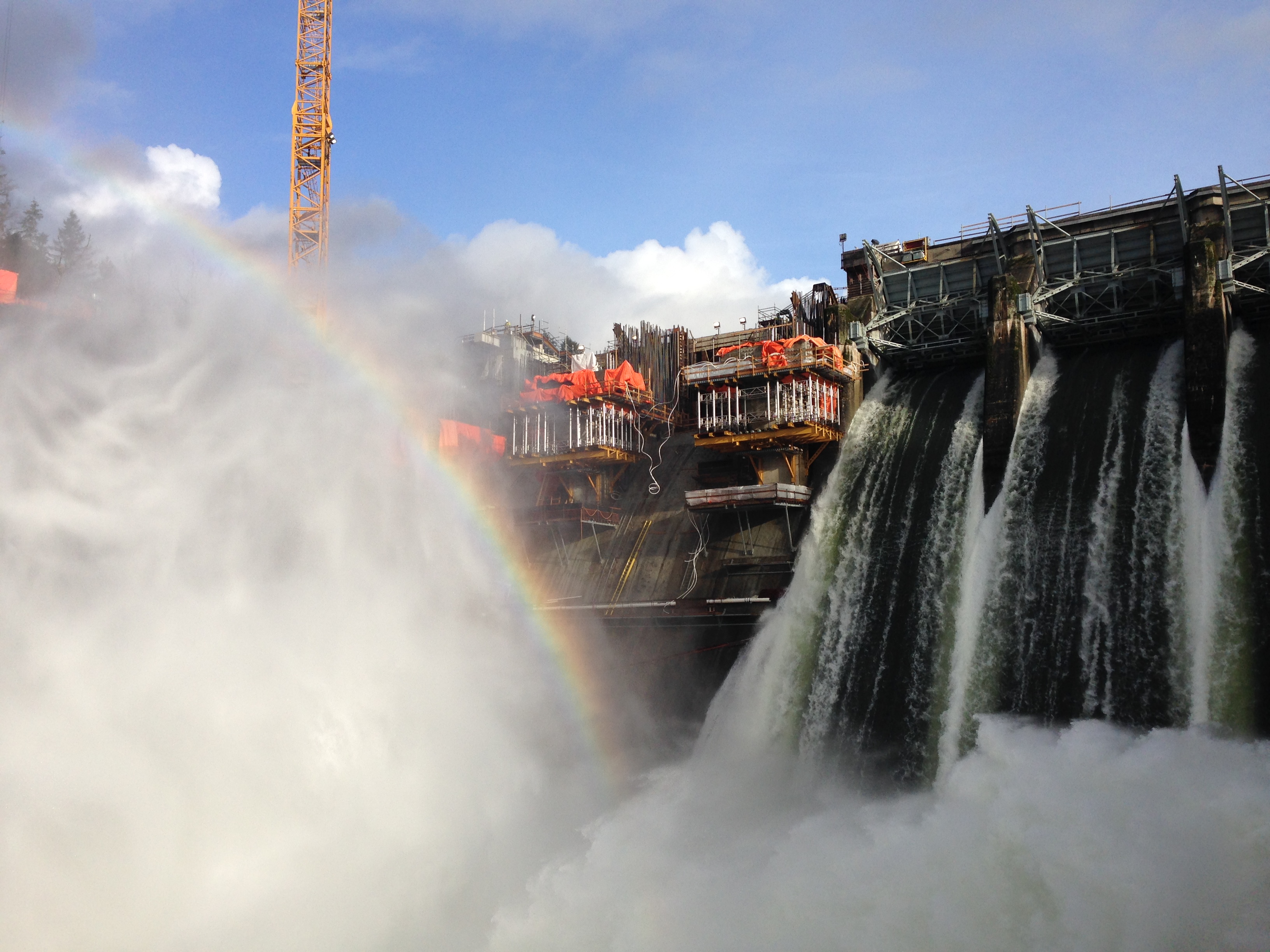Project News
Ruskin Dam

Major renovations underway on 80 year-old Ruskin Dam in B.C.
On most days, the Ruskin Dam doesn’t draw much attention. Nested between pine laden banks, set back from the nearest major road, the dam seems to blend in with the surrounding scenery, often clouded with mist and fog in the chilly British Columbia mornings.
 But not so in late October and November of last year, when unusually heavy rains filled the dam’s reservoir. The wet weather necessitated a water release of massive proportions, with water spilling over the dam at 900 cubic meters per second. To put that in perspective— Niagara Falls flows at about 2,400 cubic meters per second.
But not so in late October and November of last year, when unusually heavy rains filled the dam’s reservoir. The wet weather necessitated a water release of massive proportions, with water spilling over the dam at 900 cubic meters per second. To put that in perspective— Niagara Falls flows at about 2,400 cubic meters per second.
The complication? Flatiron is currently upgrading the Ruskin Dam and Powerhouse, which is 60 kilometers (37 miles) east of Vancouver on the Stave River. The dam, built in the 1930s, provides power to homes and businesses across British Columbia.
“The pier currently under construction was within one meter of one of the gates that was spilling,” said project manager Rick Morrison. “So we couldn’t work on that particular pier while the spill was happening, but otherwise nothing was damaged with our pier formwork.” The spill lasted a couple of weeks, but then slowed down considerably.
Flatiron is now working on two separate contracts on the dam. The first, started in June 2012, includes seismically upgrading the dam and the powerhouse by constructing new piers, installing new spillway gates, constructing a two-lane bridge and powerhouse superstructure upgrade, and installing a new powerhouse crane and elevator.
Crews are currently in the process of building new piers for the spill gate, which is expected to be complete by January. Over the winter, new radial gates will also be installed. The first phase of dam spill work will be done in late spring.
Flatiron won the second contract and began work in February 2014 to refurbish the dam’s three generating units. “Right now we’re in the process of isolating one of the units, which involves installing temporary bulkheads at the intake structure as well as the draft tube,” explained Rick. “Once they’re sealed off, we can de-water the entire unit, and get crews inside.”
Once crews are able to access the penstock—the tunnel connecting the dam intake to the generator—they’ll conduct repairs and replace a section of the penstock. They will also install a new intake gate systems powered by a new hydraulic unit.
The aging dam still has most of the original controls and systems from the 1930s, so crews will also replace mechanical and electrical systems. The old dam has held some other surprises for the team as well.
“There have be en a lot of unknown, unforeseen conditions as we’ve demolished parts of the dam, like old formwork that was just left in place from the original construction. There are many components of the powerhouse that are still in there from the 1930s,” said Rick.
en a lot of unknown, unforeseen conditions as we’ve demolished parts of the dam, like old formwork that was just left in place from the original construction. There are many components of the powerhouse that are still in there from the 1930s,” said Rick.
Crews are faced with tight quarters at the intake, within the powerhouse and spillway tunnels, but also on the face of the dam itself.
“One of the biggest challenges is construction within a confined work area,” said Rick. “It requires a lot of coordination of all our work crews and subcontractors to work in the small space.”
“You have the same sort of limited work space on the spillway because it is so steep. The crews are using engineered platforms to do all the demolition, drilling and new pier construction from. The project requires close coordination with the plant operators—the existing facility must remain online and active during construction.
“There are always changes required to accommodate access to and operation of the facility. We just have to adjust, change our methods or modify our schedule to make it work,” said Rick.
The area around the dam is used for recreation and includes some environmentally sensitive areas. The reservoir behind the dam is a drinking water source, and downstream of the dam thousands of salmon come to spawn every fall. Flatiron is following a comprehensive environmental management plan to ensure the area is protected.
“As we’re demolishing all the old concrete piers and building back new piers, any slurry or contaminated water that we may produce has to be collected at the bottom of the spillway, and pumped up to a treatment center,” advised Rick. “Our crew has done a great job managing that and set up all the measures for containment.”
There are about 60 people working on the project now, but Rick expects the number to grow to approximately 100 at the high point of work. Crews will tackle the powerhouse work as part of the second contract in 2015.
Upon completion of the upgrades in 2017, the facility will be able to withstand a 10,000-year earthquake. The upgraded facility will provide power to 33,000 homes.
